Search Images
Browse Content (p. 1594)

Image
Roman Oil Lamp
Oil lamp in the form of a wine barrel found in Cologne (Germany), Roman Empire. (Romisch-Germanisches Museum, Cologne)
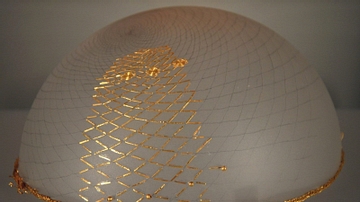
Image
Roman Gold Hairnet
Hairnet made of finely woven gold wires, 1st century CE (Palazzo Massimo alle Terme, Rome)
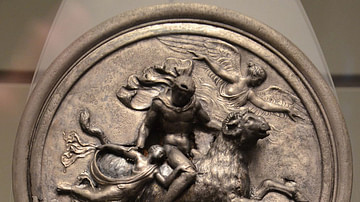
Image
Roman Silver Mirror
Silver mirror with an elaborate relief on the backside depicting an episode of the myth of Phrixus and Helle from the ancient Greek legend of the Golden Fleece, end of 2nd century CE. (Palazzo Massimo alle Terme, Rome)
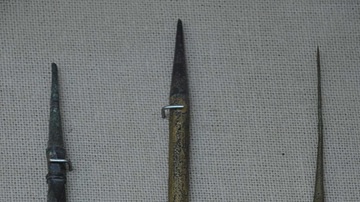
Image
Roman Stili
A Roman stilus, used for incising letters into the soft wax surface of writing tablets, the broad flat end was used for erasing. Roman Empire. (British Museum, London)
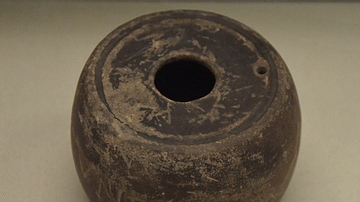
Image
Pottery Ink-well
Pottery ink-well inscribed with the owner's name, Iucundus, from Londinium (Roman London). The ink was made up using one part of gum-water to three parts carbon black. (British Museum, London)
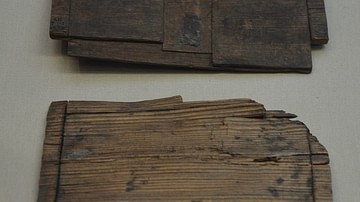
Image
Wooden Writing-tablet
Wooden writing-tablet, 1st-2nd century CE, from Londinium (Roman London). British Museum, London
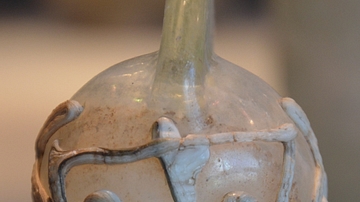
Image
Gladiator Helmet-Shaped Dropper Flask
Gladiator helmet-shaped dropper flask decorated with "snake thread" trails, found in Cologne, Germany, dated to the 3rd century CE.
Römisch-Germanisches Museum, Cologne.
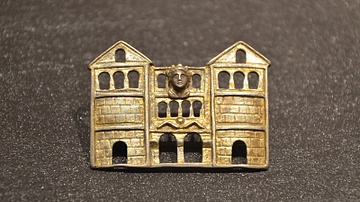
Image
Roman Gilt Silver Fibula
Roman gilt silver fibula in the form of a three-story tripartite gate of rusticated masonry, with a central double-arched entrance flanked by two towers and a draped bust of Sol at the top story, c. 3rd century to early 4th century CE. Römisch-Germanisches...
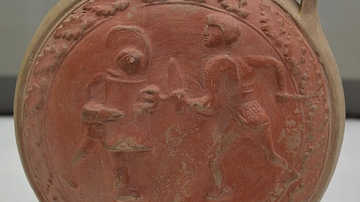
Image
Terracotta Flask with Gladiators
Terracotta flask depicting a gladiatorial scene, Roman Empire.
Römisch-Germanisches Museum, Cologne.
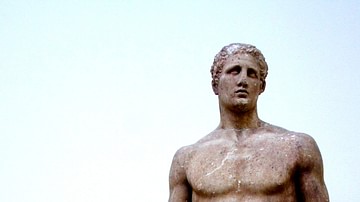
Image
Agias, Son of Aknonios
A votive marble offering in the style of Lysippos from the Daochos Monument at Delphi; over-life-size at 2m tall; Late Classical; c.336- 332 BCE. Agias was the grandfather of Daochos II, who dedicated the monument, and a highly successful...